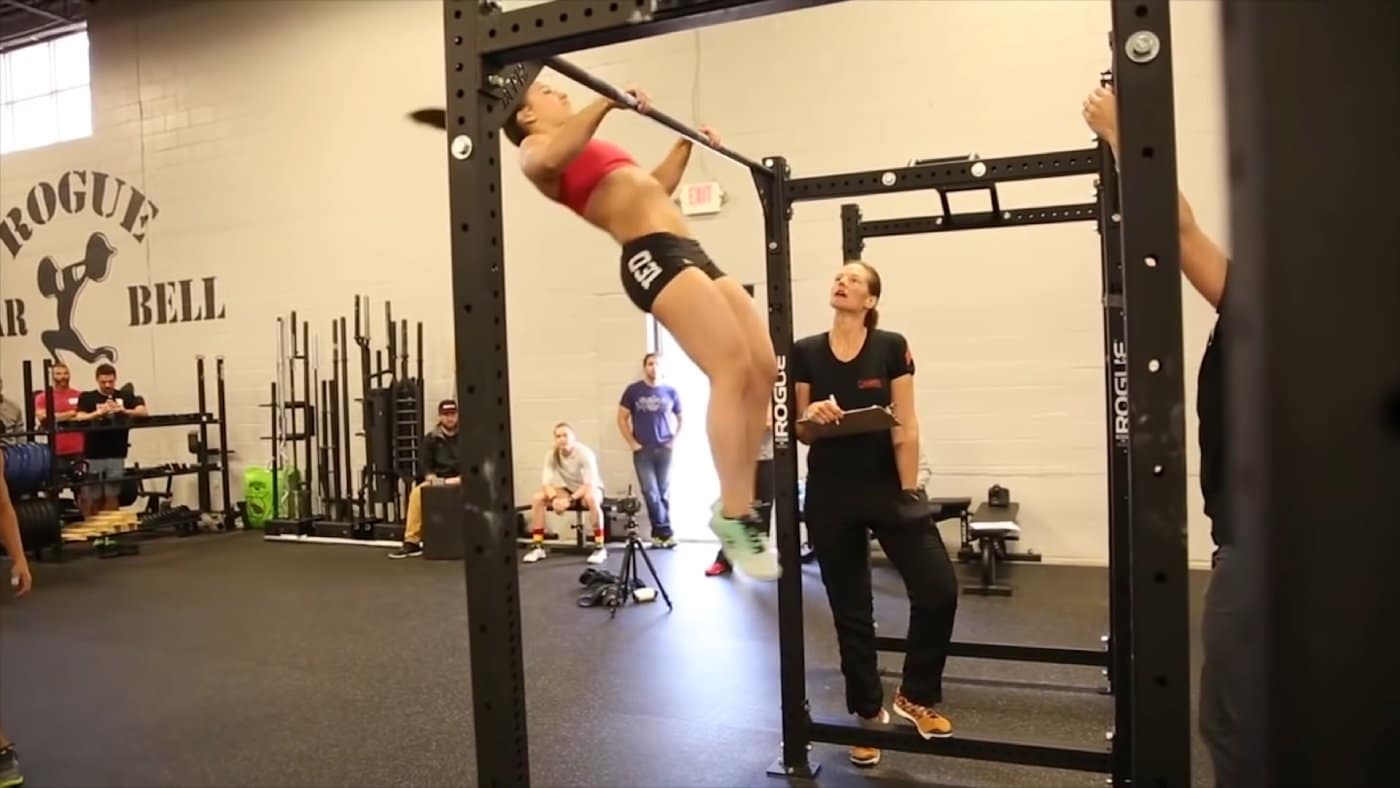Are you ready to revolutionize your fitness routine with a workout that’s short, intense, and incredibly effective?
Discover this high-intensity interval training method that packs a powerful punch in just four minutes.
Developed by Dr. Izumi Tabata, this technique is not just a fitness fad; it’s a scientifically backed approach to achieving peak physical condition.
Whether you’re a seasoned athlete or a fitness newbie, understanding Tabata can transform the way you approach exercise.
Jump to:
- Understanding Tabata
- CrossFit Tabata Fundamentals
- Tabata Movements and Exercises
- Designing a CrossFit Tabata Workout
- Maximizing Results with CrossFit Tabata
- Nutrient Optimization for CrossFit Tabata Athletes
- Frequently Asked Questions
- What are some effective Tabata workouts for those new to CrossFit?
- How can I incorporate weights into a Tabata workout?
- What’s the difference between Tabata and traditional HIIT?
- Are there specific Tabata routines tailored for women?
- How long should a beginner’s Tabata workout session be?
- Can you recommend a Tabata cycling routine for CrossFit training?
Understanding Tabata
Defining Tabata Training
Tabata is a specific type of high-intensity interval training (HIIT) designed to provide maximum fitness benefits in a short amount of time. Developed by Japanese scientist, Dr. Izumi Tabata, this training method involves performing exercises for 20 seconds at a high intensity, followed by a 10-second rest. This cycle is repeated eight times, resulting in a four-minute workout. Some popular Tabata exercises include burpees, air squats, and sprints. Here is a helpful article explaining Tabata in the context of CrossFit.
Tabata and High-Intensity Interval Training (HIIT)
Tabata is a form of HIIT, which is a workout style that alternates short bursts of intense physical activity with rest or low-intensity recovery periods. The goal is to sustain maximum effort during the intense intervals, challenging your cardiovascular and muscular systems. Tabata differs from traditional HIIT in that it follows a specific 20-seconds-on, 10-seconds-off pattern for eight cycles. You can learn more about the Tabata format and its similarities to traditional HIIT.
The Science Behind Tabata: VO2 Max and Anaerobic Capacity
Tabata training aims to improve your aerobic and anaerobic capacity by pushing your body to its limits during the high-intensity intervals. These short, intense bursts of activity are paired with minimal rest periods, forcing your body to adapt to the strain and ultimately enhance its performance.
VO2 max refers to the maximum amount of oxygen your body can utilize during intense exercise. This measurement is often used to determine an individual’s cardiovascular endurance. It is important to note that Tabata training effectively increases your VO2 max as a result of the highly demanding exercises.
Additionally, Tabata training improves your anaerobic capacity. This refers to your body’s ability to perform high-intensity exercises without relying on oxygen, such as weightlifting and sprinting. The short, intense bursts of effort in Tabata require your body to use energy stored in your muscles, which helps increase your anaerobic capacity over time.
By incorporating Tabata workouts into your exercise routine, you can experience these science-backed benefits and push your body to new levels of fitness. Want to get started with Tabata? Check out these workouts designed for both bodyweight and weighted exercises.
CrossFit Tabata Fundamentals
CrossFit Philosophy and Tabata
CrossFit is often referred to as the “sport of fitness” due to its unique blend of conditioning, strength training, and functional movements. Tabata is a popular High-Intensity Interval Training (HIIT) method that works well within the CrossFit philosophy. It involves short, intense work intervals followed by brief, active rest periods. This combination has been proven effective for improving cardiovascular fitness and muscular endurance.
Workout Structure and Timing
A typical Tabata workout consists of 8 rounds, each comprising 20 seconds of all-out effort followed by 10 seconds of rest. A complete Tabata workout lasts just 4 minutes. In CrossFit, multiple exercises can be combined to create a workout of the day (WOD) with several Tabata intervals. For example, a CrossFit Tabata WOD could include:
- Tabata Row
- Tabata Air Squats
- Tabata Pull-Ups
- Tabata Push-Ups
- Tabata Sit-Ups
With 1-minute rest between each Tabata, this workout would last 24 minutes in total. The goal is to perform as many reps as possible during each 20-second work interval while maintaining proper form. Keep in mind that maintaining a high intensity throughout the workout is crucial for achieving optimal results.
The Role of Rest Periods in Tabata
The short, 10-second rest periods in Tabata workouts play a significant role in their effectiveness. These rest intervals allow your muscles to recover just enough to perform another high-intensity bout. As your cardiovascular system is working hard to deliver oxygen to your muscles, your body is also adapting and becoming more efficient.
It is essential to stick to the prescribed rest periods and resist the urge to rest for longer. Performing Tabata workouts consistently, with proper rest periods, will help you improve your work capacity and endurance in various athletic and everyday activities. Remember to listen to your body and modify exercises as needed to maintain a safe and effective workout routine.
Tabata Movements and Exercises

Bodyweight Movements
Tabata training mainly involves high-intensity intervals, which makes bodyweight exercises a perfect fit. Some common bodyweight movements in Tabata workouts include squats, push-ups, burpees, and lunges. These movements can be performed anywhere, requiring no equipment, and they target multiple muscle groups simultaneously. For instance:
- Squats: Strengthen your lower body by doing air squats, jump squats, or pistol squats.
- Push-ups: Engage your chest, shoulders, and triceps with regular push-ups, diamond push-ups, or clapping push-ups.
- Burpees: Get a full-body workout combining a squat, push-up, and jump in one movement.
- Lunges: Work on your leg muscles and balance with forward, reverse, or jumping lunges.
Weightlifting and Gymnastics in Tabata
Tabata workouts can also incorporate weightlifting and gymnastics exercises to challenge your muscles and improve strength. Some effective weightlifting exercises for Tabata training are dumbbell thrusters, kettlebell swings, and deadlifts. On the other hand, gymnastics movements such as pull-ups and planks can help build core strength and body control. Here are some examples:
- Dumbbell Thrusters: Combine a front squat and overhead press, targeting your entire body.
- Kettlebell Swings: Work on your posterior chain and explosive hip power with both single and double kettlebell swings.
- Deadlift: Strengthen your lower back, hamstrings, and glutes by incorporating light to moderate weight deadlifts.
- Pull-ups: Build your upper body strength with strict, kipping, or even chest-to-bar pull-ups.
- Plank: Hold a plank position for 20 seconds while engaging your core and maintaining proper alignment.
Cardiorespiratory Exercises
Incorporating cardio exercises in your Tabata regimen boosts your cardiovascular endurance and overall fitness. Popular Tabata cardio exercises include running, rowing, double-unders, and box jumps. For maximum benefits, aim to maintain a steady pace and high intensity throughout the 20-second interval. Some examples:
- Row: Use a rowing machine to burn calories and improve your cardiovascular endurance.
- Running: Sprint for 20 seconds, focusing on your speed and breathing.
- Double-unders: Master this challenging jump rope exercise to improve coordination and agility.
- box jumps: Increase your leg power and explosive strength with successive box jumps.
Integrating these movements into your Tabata workouts ensures a well-rounded and dynamic fitness routine that challenges your entire body. Remember to always maintain proper form and prioritize safety, especially during high-intensity workouts.
Designing a CrossFit Tabata Workout

Sample Tabata Workouts
One popular Tabata workout in CrossFit is Tabata This, which consists of performing eight rounds of 20 seconds of work and 10 seconds of rest for each movement. This workout includes five exercises: rowing, squats, pull-ups, push-ups, and sit-ups. Another option is Tabata Something Else, which consists of 32 intervals of 20 seconds of work and 10 seconds of rest, divided evenly among pull-ups, push-ups, sit-ups, and squats.
Here is a simple bodyweight-only Tabata workout for all levels:
| Exercise | Interval |
|---|---|
| Tabata Push-Ups | 8 rounds |
| Tabata Squats | 8 rounds |
| Tabata Burpees | 8 rounds |
(20 seconds of work followed by 10 seconds of rest in each round)
Customizing Tabata for Skill Levels
When designing a CrossFit Tabata workout, consider the skill level of the participants. For beginners, focus on bodyweight exercises like push-ups, squats, and burpees. The intermediate option can include moderate weightlifting movements, such as kettlebell swings or dumbbell snatches. For advanced athletes, consider incorporating complex exercises like muscle-ups or handstand push-ups.
Ensure to provide scaling options for different skill levels as well. For instance, beginners with limited mobility or injury can perform push-ups on their knees, while intermediate athletes can do regular push-ups.
Incorporating Tabata into Regular Training
To integrate Tabata into your regular CrossFit training, try alternating traditional workouts with Tabata routines or adding Tabata intervals to existing workouts. For example, after completing a strength training session, finish with a Tabata-style workout to increase cardiovascular endurance and muscular power. Experiment with different exercises and variations to continuously challenge your body and track your progress. Remember, the key to successful integration is finding the right balance between your regular CrossFit workouts and Tabata intervals to maximize gains without causing overtraining or injury.
Maximizing Results with CrossFit Tabata
Tracking Progress and Scoring
One of the essential aspects of CrossFit Tabata is tracking your progress to help you remain motivated and gauge improvements. Tabata workouts consist of eight rounds of 20 seconds of intense exercise followed by a 10-second rest period. To track your progress, count the number of reps completed in each round.
For scoring Tabata workouts, use the lowest score method. This means that your final score will be the lowest number of reps performed across all rounds. Focusing on your lowest score will push you to maintain consistency and improve overall endurance.
For example:
| Round | Reps |
|---|---|
| 1 | 10 |
| 2 | 8 |
| 3 | 7 |
| 4 | 6 |
| 5 | 8 |
| 6 | 7 |
| 7 | 9 |
| 8 | 10 |
In this example, your total score would be 6 (the lowest number of reps).
Intensity and Effort Management
CrossFit Tabata involves high-intensity interval training (HIIT) which means that intensity and effort play a significant role in maximizing results. To ensure you’re pushing your limits, focus on giving your all during the 20 seconds of work and recovering during the 10 seconds of rest.
Be mindful of managing your effort. Starting too strong might lead to burnout and reduce your scores and progress over time. Find a balance between pushing yourself and maintaining a consistent performance throughout the rounds.
Recovery and Injury Prevention
Proper recovery is crucial for avoiding injury and improving long-term results with CrossFit Tabata. It is essential to warm-up before starting any high-intensity workouts to prevent injury and prepare your muscles for the intense demands of Tabata training.
Additionally, incorporating cooldowns and stretching exercises will help your body recover after your Tabata session. Focus on muscle groups that were primarily used during the workout to ensure optimal flexibility and recovery.
Listen to your body and pay attention to any pain or discomfort. It’s important to know the difference between the burn of a good workout and signs of possible injury. Rest and recover when needed, and consult with a professional if any pain persists.
Nutrient Optimization for CrossFit Tabata Athletes

Pre- and Post-Workout Nutrition
Proper nutrition plays a crucial role in boosting your athletic performance during Tabata training. To ensure a balance between energy intake and consumption, it is imperative to focus on pre- and post-workout nutrition. Before your workout, consume a meal that consists of moderate to high carbohydrates and moderate protein content, alongside a healthy dose of fats. This will provide you with the necessary energy to sustain your high-intensity workouts.
Post-workout, it’s essential to replenish the energy you’ve expended and promote muscle recovery. This can be achieved by consuming a well-rounded meal with a balance of carbohydrates, proteins, and healthy fats within 30-60 minutes of completing your workout. For example, you can combine lean protein sources like grilled chicken, fish, or tofu with a healthy serving of complex carbohydrates such as brown rice, quinoa, or sweet potatoes.
Hydration and Energy
Hydration is paramount for any athlete, especially during high-intensity workouts like CrossFit Tabata. Not only does adequate hydration help in maintaining energy levels, but it also plays a critical role in regulating body temperature and assisting in nutrient transport. Aim to consume at least 8-10 glasses of water throughout the day. During workouts, drink small amounts of water consistently to stay hydrated. Incorporating an electrolyte-rich sports drink can be beneficial for particularly long or intense training sessions.
Dietary Strategies for Intense Workouts
Carbohydrates serve as the primary fuel source for your body during Tabata training. Consuming an adequate amount of carbohydrates can increase your aerobic capacity, enabling you to train harder and perform better. Focus on incorporating complex carbs, like whole grains, fruits, and vegetables, to sustain energy levels during your workouts and promote weight loss without sacrificing muscle mass.
Proteins are also essential for any athlete as they contribute to muscle recovery and repair. Aim for a daily intake of 1.6-2.2 grams of protein per kilogram of body weight, depending on your training intensity and goals.
Fats, especially healthy unsaturated fats, should not be overlooked. They provide essential nutrients and help maintain a sense of satiety. Foods rich in healthy fats include avocados, nuts, seeds, and olive oil.
Following these guidelines for pre- and post-workout nutrition, hydration, and dietary strategies will not only maximize your performance during CrossFit Tabata workouts but also contribute to overall health and weight loss. Monitor your progress, and make adjustments as needed to support your individual goals and specific needs.
Frequently Asked Questions

What are some effective Tabata workouts for those new to CrossFit?
If you’re new to CrossFit, there are a variety of Tabata workouts you can try. One such exercise is “Tabata This,” which is a 24-minute workout composed of Tabata rowing, air squats, pull-ups, push-ups, and sit-ups, with a 1-minute rest between each Tabata interval. As a beginner, you can scale down the exercises to suit your current fitness level. Read more about Tabata This here.
How can I incorporate weights into a Tabata workout?
Adding weights to your Tabata routine can be accomplished by including exercises like kettlebell swings, dumbbell thrusters, or weighted squats. For example, try alternating between bodyweight exercises (e.g., burpees) and weightlifting movements (e.g., kettlebell swings) for a challenging Tabata workout. This article provides an overview of incorporating weights.
What’s the difference between Tabata and traditional HIIT?
Tabata is a type of high-intensity interval training (HIIT) characterized by its specific interval structure: 20 seconds of intense work followed by 10 seconds of rest, repeated for a total of 8 rounds. Traditional HIIT can comprise various work-to-rest ratios and durations. While Tabata is also a form of HIIT, its unique format sets it apart from other HIIT methods. Learn more about Tabata and its origin here.
Are there specific Tabata routines tailored for women?
Tabata workouts can be customized to suit anyone’s fitness needs, regardless of gender. You might want to focus on exercises targeting specific muscle groups or areas you’d like to improve. For example, combining lower body exercises (e.g., weighted lunges) with upper body workouts (e.g., push-ups) to create a well-rounded routine that can be tailored to your preferences and fitness goals.
How long should a beginner’s Tabata workout session be?
A standard Tabata workout lasts for 4 minutes (8 rounds of 20 seconds work and 10 seconds rest). However, you can extend the duration by performing multiple Tabata cycles or combining different exercises for a more varied routine. As a beginner, start with one 4-minute Tabata workout, and gradually increase the number of exercises or cycles as your fitness level improves.
Can you recommend a Tabata cycling routine for CrossFit training?
A Tabata cycling routine can be integrated into your CrossFit training by performing intervals of high-intensity sprints on a stationary bike. Pedal at maximum effort for 20 seconds, followed by a 10-second rest period, and repeat for a total of 8 rounds. Tabata cycling is an effective way to improve your cardiovascular endurance and can be a great complementary workout to your CrossFit training regimen.













